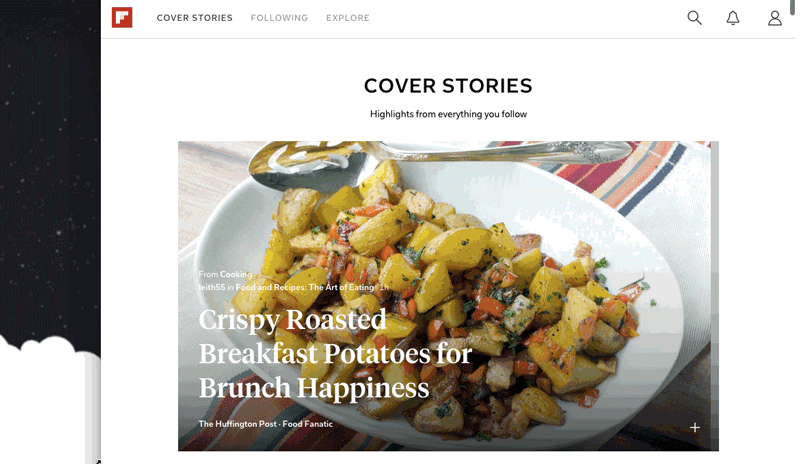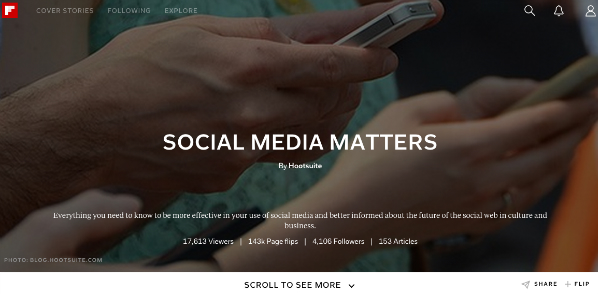While 2015 digital trend lists forecasted a continuing shift to mobile for digital media consumption in the upcoming months, many mobile-first apps have kicked off the year with launching browser versions of their product. The latest one to enter the desktop arena is Flipboard, an online magazine and content curation app, which announced the release of its Web app this week. The launch made headlines in several major tech publications, accompanied with commentary on the multiple-screen habits of today’s readers.
If you’re curious about what makes Flipboard’s move worthy of extensive coverage, we tell you everything you need to know about the app’s evolution and the importance of the Web app for mobile developers.
Flipboard for the Web
Not only was Flipboard originally developed as a mobile-first app, it was one of the pioneer apps built for the tablet (specifically, the Apple iPad in 2010). Its name and “flipping” functionality were designed to mirror the users’ natural touchscreen behavior. Users could browse Flipboard magazines in visually appealing, uncluttered environments. The iPad allowed Flipboard developers not to worry about distracting elements, such as siderails and banner ads, that can get in the way of reading experience in a browser window.
However, it’s no secret that tablets have had a bit of an identity crisis among users, who increasingly prefer to take their browsing experience to smartphones or phablets. Flipboard, too, has seen the biggest spike in user growth once the mobile app for smartphones was launched.
Now, Flipboard boasts as many as 50 million active users every month, and has a variety of web tools to help desktop users add to their magazines. There is the Flip It Chrome extension that allows users to add content to their magazines from the web. There’s also a web-based editor where users can make modifications, such as changing the order of the stories that appear on their magazine, and switch up the cover stories. Rising demand from Flipboard users who played around the app on the web, the desktop version was the next logical step.
Flipboard CEO Mike McCue told Mashable that, in a way, the app has come full circle. “Originally, it was going to be a web experience, and then we felt like the web technology wasn’t where we needed it to be,” McCue said. In another interview, Flipboard CEO told about another motivation to develop a web app—interest from the publishers, such as Conde Nast and Time Inc., many of whom are still heavily invested in the Web.
Similar to its original idea, Flipboard for the Web is designed to be mindful of the user experience in a desktop browser: this means responsive layouts for different screen sizes, interactions triggered by the mouse, and, most importantly, the act of scrolling—user’s way of interacting with written content on the Web.

In addition to the advantages for major Web publications, this also benefits the new format of Flipboard ads, launched in January, which seamlessly incorporates sponsored content into users’ magazines.
Mobile apps on the Web
The move to the Web was a very deliberate move for Flipboard, with full considerations of the user experience in a browser environment. This shows that, although mobile penetration for Internet users has risen drastically over the past year, a considerable portion of users remain faithful to the desktop.
This must be the perspective of many app developers, even those at the top of their category for mobile—like the top messaging app, WhatsApp, which introduced a desktop version in January. WhatsApp Web can be connected to the user’s existing account by scanning a QR code with their smartphone, thus preserving the security behind a verified phone number, which is necessary to make an account in the first place.
Similar to what Instagram has done for its desktop version, WhatsApp remains true to its mobile-first nature by only allowing existing accounts to log onto the web. This way, developers can ensure the app’s user base grows on mobile, while making the web version a convenient extension of services.
Apps have provided the biggest boost to mobile browsing times, accounting for 52% of total Internet time for US users. While mobile has surpassed desktop in digital media consumption for the first time last year, developers don’t want to risk isolating billions of desktop users. The logical next move? To embrace the Web app, a natural extension of the its mobile counterpart that allows to provide a high-quality platform experience to the other half of Internet users.
Have you seen Hootsuite’s Flipboard magazine, Social Media Matters? Follow us here.
